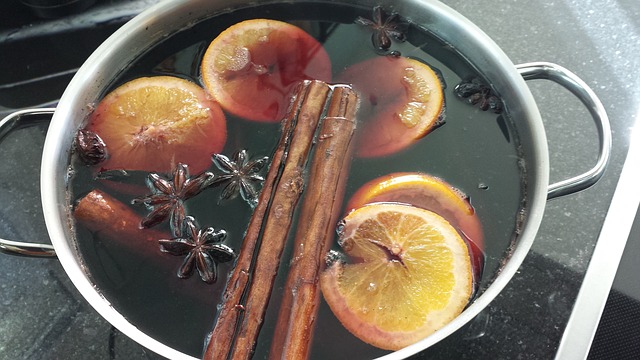Mulled wine has been used as a defense against the cold and to promote good health since the 2nd Century, when Roman conquerors introduced this concoction of heated wine to northern Europeans.
Thanks to the rise of trade along the Silk Road during the Roman Empire, new spices like ginger, cardamom, cinnamon and nutmeg flooded into Europe and improved food and drink across the Continent.
The practice of mulling survived the fall of the Empire and medieval Europeans enjoyed it even more than the Romans did. Europeans found that steeping herbs, spices and a host of other ingredients in wine for medicinal purposes made an effective health potion. Heating it was an effective way of fighting off winter chill. Mulled wine took off in a massive way in countries like Germany, Austria and the Scandinavian countries once the practice appeared to wane in the more southern countries.
Mulled wine disappeared from most of Europe just after the middle ages, but the Swedish monarchy kept it alive by continuing to enjoy Claret, a mixture of Rheine wine, sugar, honey and spices).
By the 1890s, Victorian England saw a resurgence of mulled wine, or “glögg” which became associated with Christmas. Charles Dickens wrote about a version of mulled wine called Smoking Bishop in his 1843 novel “A Christmas Carol.” Henceforth, mulled wine’s association with the holidays was solidified.
Over time unique bottles depicting Santa Claus were distributed throughout Europe – uprooting the long forgotten mulled wine in a new festive light.
Today the mechanics remain the same: orange, cinnamon, nutmeg, a (cheap) dry red wine and a bit of port or brandy Why cheap, you ask? Best not to waste the good stuff in your cellar; between the sugar and spice, mulling masks a wine’s finer points.
Here is a classic Mulled Wine Recipe for you to try at your Christmas celebration:
INGREDIENTS
• 1 (750 ml) bottle of dry red wine
• 1 orange, sliced into rounds (also peeled, if you would like a less-bitter drink)
• 8 whole cloves
• 2 cinnamon sticks
• 2 star anise
• 2–4 tablespoons sugar, honey, or maple syrup to taste (or your desired sweetener)
• optional add-in: 1/4 cup brandy (or your favorite liqueur)
• optional garnishes: citrus slices (orange, lemon and/or lime), extra cinnamon sticks, extra star anise
Combine all ingredients in a saucepan and heat until the mixture just barely reaches a simmer over medium-high heat. (Avoid boiling — you don’t want to boil off the alcohol.) Reduce heat to medium-low, cover, and let the wine simmer for at least 15 minutes or up to 3 hours.
Strain, and serve warm with your desired garnishes.
To your Health!

